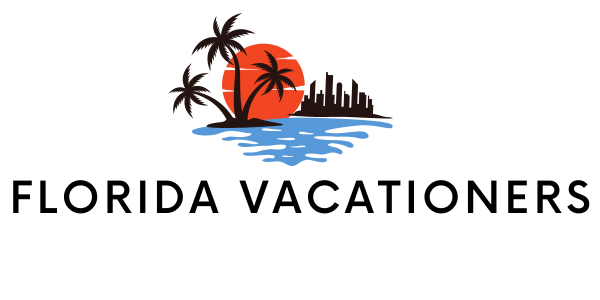Looking for places to see sea turtles in Florida?
In Florida, there is a magical season between the months of May and October. The Snowbirds flee the warm weather, returning to their homes in the north, and sea turtles start their long crawl up the beach to lay their eggs.
We locals look forward to both migrations every year! If you love adorable baby turtles, white sand, warm weather and peaceful sea breezes, then Florida is the place for you!
So, as we say in the South, “Have a seat y’all and I’ll tell ya what we’ve got down here!”
Sea turtles nest on many beaches across the U.S. However, over 90% of these beaches are in the great state of Florida. Sea turtles are creatures of habit. They like to return to the same beach they were born from, to lay their eggs. This makes turtle viewing sites easier to predict, protect and easier to view.
What is the best place to see sea turtles in Florida?
1. Dry Tortugas National Park
Dry Tortugas National Park is on the westernmost point of Key West. Seven different islands, their surrounding coral reefs and the clear blue waters of the Gulf of Mexico make up this remote and pristine park. In addition to being the home of turtle nesting grounds, this park contains historic Fort Jefferson, untouched coral reefs, crystal blue waters, white coral sands and unique wildlife.
This park is the most active turtle nesting site in the Keys. While driving to this remote area isn’t an option, there are tours leaving from the Key West and nearby mainland marinas year-round. It is important to note that Bush Key closes from February to September for two bird species, the Sooty Terns and the Brown Noddies, to make their nests and raise their young in the sand.
Because of the remoteness and the danger of the open waters, it is advised that you take a licenced tour instead of a private vessel and always be aware of the weather. This is especially true if you want to go snorkelling or scuba diving. Beautiful does not always mean safe, and we want y’all safe so you can tell your friends and come back again.
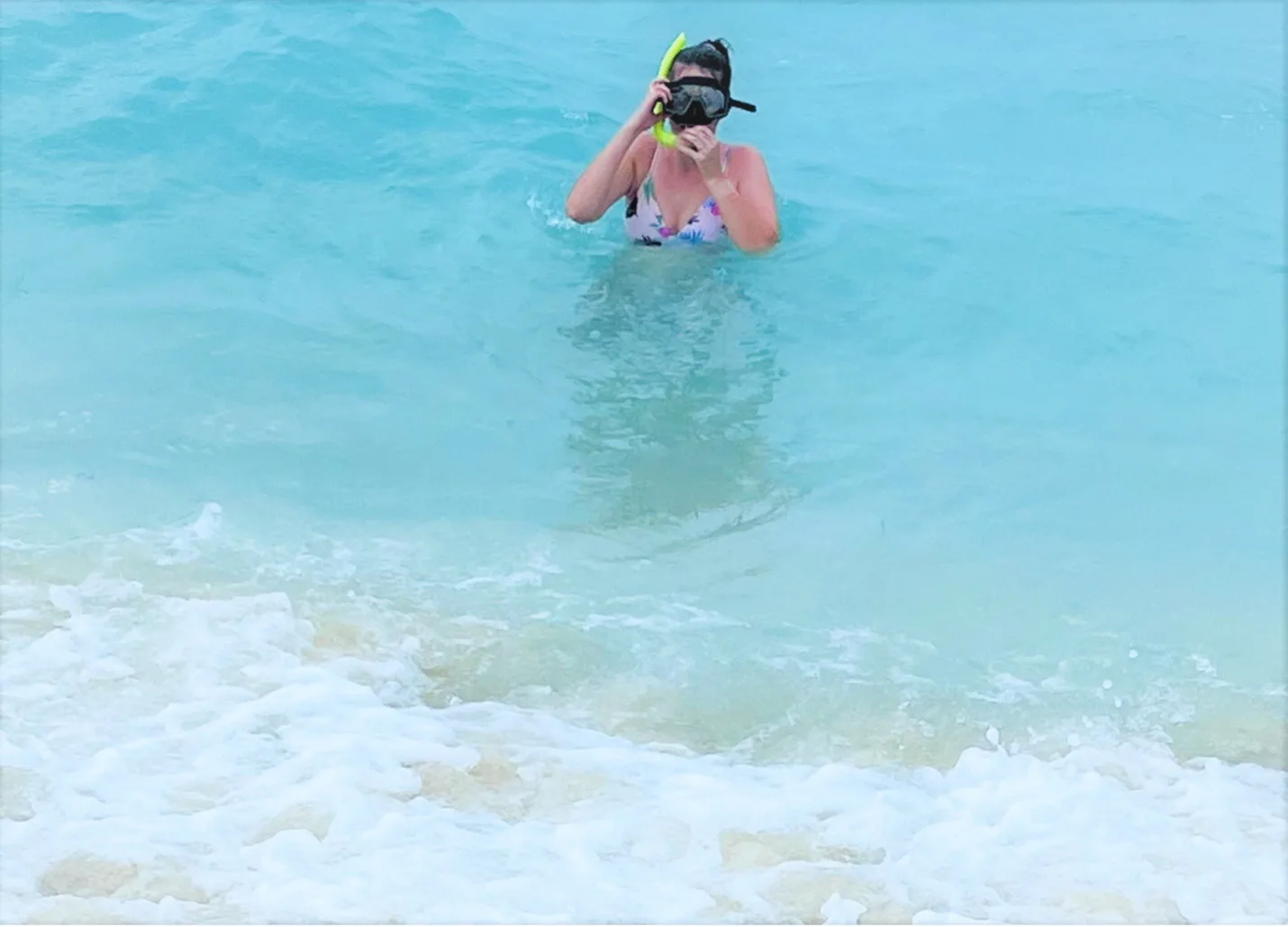
2. Key West Reef
Key West Reef lies to the east of our last location. Right now, it is the only living coral barrier reef in the U.S. Unlike Dry Tortugas, you can see all five species of turtles year-round. You still must wait for the babies, but adult turtles migrate to and from this reef year-round.
There are roads open year-round to drive to Key West, but you must get wet to see the incredible reefs, unless you take a glass-bottom boat tour.
Like Dry Tortugas, there are other attractions to lure you to this area. There are many picture-perfect sunsets that can grace the evening sky. You can see these incredible views from a variety of hotels, rental homes or a sailboat. This area is rich in history, from forts, to pirates, to Hemmingway. There is something for everyone.
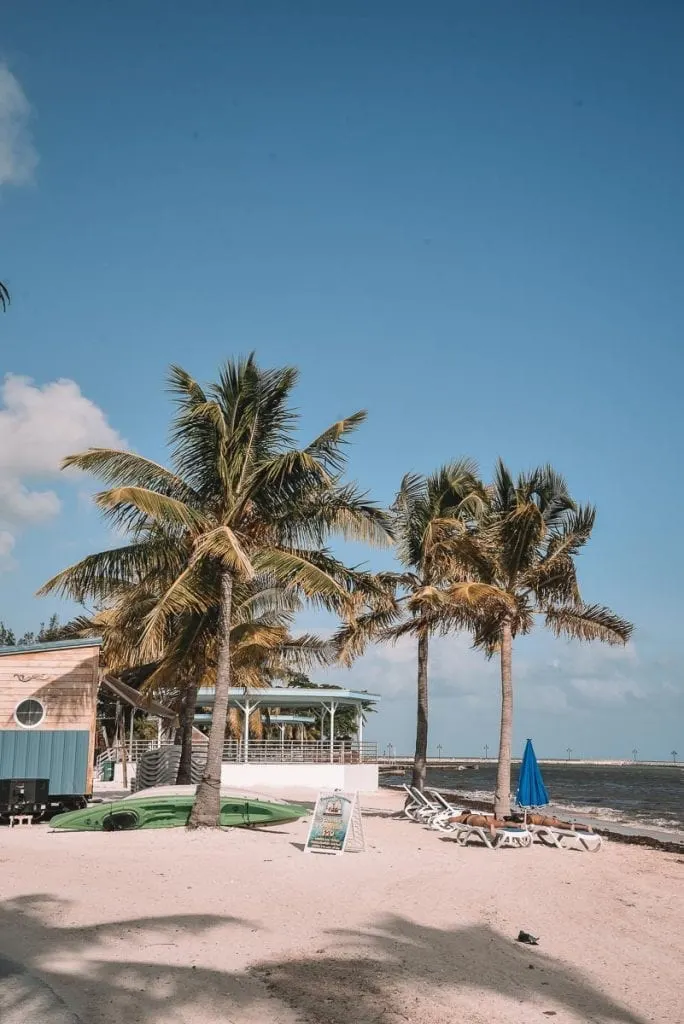
3. Vero Beach
Vero Beach lies 190 miles to the south of Jacksonville and over 130 miles north of Miami. It is also an hour and a half from the Orlando airport. Sitting on the east coast of Florida, Vero Beach faces the beautiful Atlantic Ocean.
Cool breezes, year-round sun, crisp white sand and crystal-clear shallow waters make this a haven for recreation. During turtle season, you can see the turtles make their journey from the beach or from the water. There are places to go on boat tours, rent your own boat, sailing tours, snorkelling, surfing and a million other ways to view turtles.
There are many places to stay on the beach and you are only miles from amenities such as restaurants, shopping and hotels. Vero Beach is a wonderful option for those who want to get away to see nature, but still be close to all the creature comforts of home.
3. Sebastian Inlet State Park
Sebastian Inlet State Park is the perfect option for those that want to get further away from the hustle and bustle of the city. It is located just 30 miles north of Vero Beach. It lies on a small arm of land that reaches out in the Indian River, and water flows from the river to the Atlantic.
Beautiful white sands are only a short walk from the campgrounds. This park boasts of everything from primitive camp sites to RV hook ups and everything in between. This quiet area, still close to the comforts of the city. It’s a great place to pitch your tent and watch the sea turtles find their way to the ocean at night. If you have a boat, this location is a great location.
You have the ability to explore the freshwater of the Indian or ride the waves of the Atlantic ocean all from one boat launch. This park also has biking trails so you can ride for miles in the salt sea air, while looking at their clean beautiful beaches and clear blue waters.
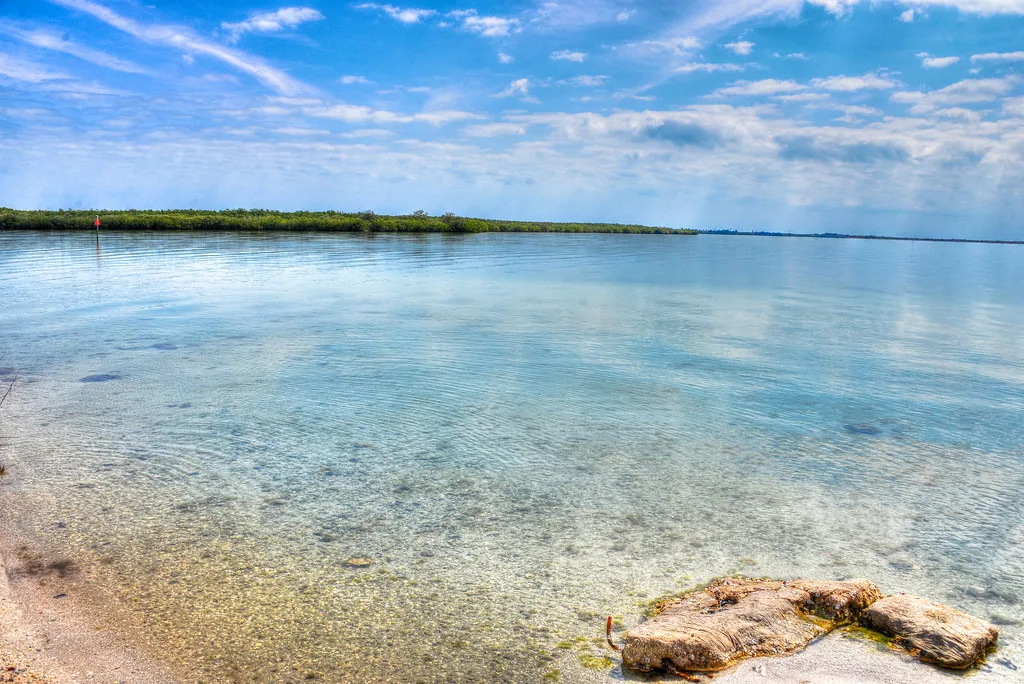
Sebastian Inlet State Park/ Flickr
4. Disney’s Vero Beach Resort
Disney’s Vero Beach Resort takes us back south along the coast to the Vero Beach area. If you aren’t into camping, but you still want to get away from the city and see a little nature, this is the place for you. Disney has built a resort that holds a golf course, pools, water slides, mini golf, tennis courts, beach games, beach lounging, bike rentals, and more.
They also host sea turtle conservation tours. These tours give you the wisdom of experienced guides, ensuring that you don’t interrupt or disturb the turtles returning to the sea. A tour also gives you a better chance of seeing sea turtles, as the guides know where all the good spots are. This resort was built for comfort, both of people and turtles.
Ever conscious of the fragile nature of turtle hatchlings’ journey, the resort tinted the east-facing windows and have no exterior lighting facing the beach. This ensures the light of the moon is the only light that guides the baby turtles.
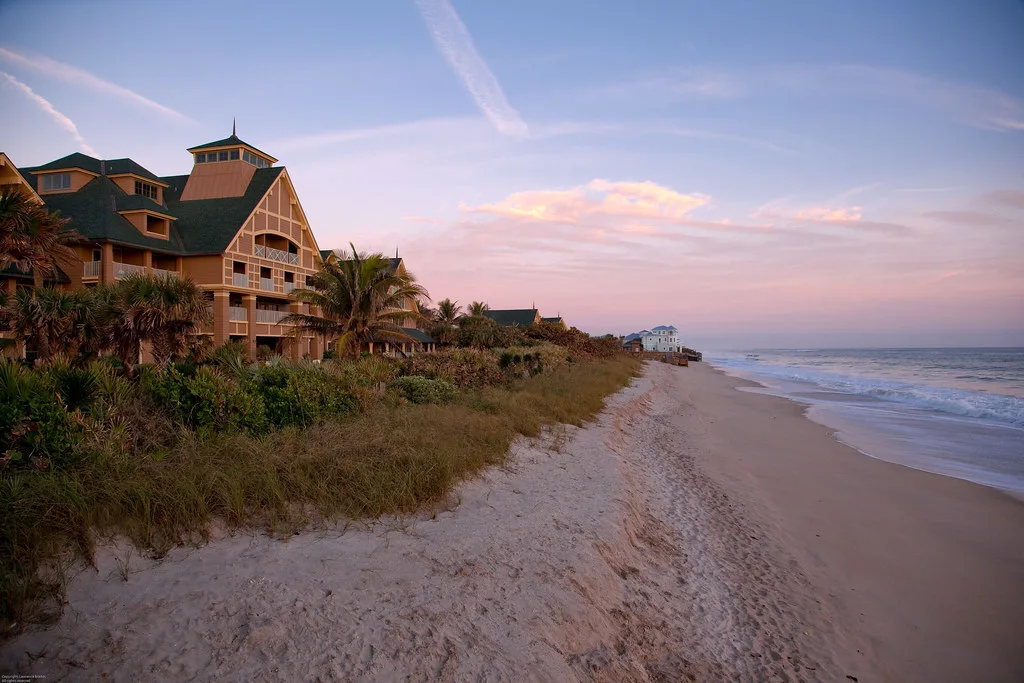
Disney’s Vero Beach Resort/ Flickr
5. Archie Carr National Wildlife Refuge
Archie Carr National Wildlife Refuge in Melbourne Beach lies about an hour southeast of Orlando. It covers over 20 miles of the barrier island beaches of Melbourne and Wabasso. Barrier islands are long stretches of sand that run along the coast of Florida, and other places.
They are made mostly of sand and vegetation. They play an important part in protecting the coast from erosion, filtering water and protecting wildlife. Knowing how important preservation of these areas are, this refuge was established to protect the breeding grounds of the Loggerhead turtles, Green turtles and Leatherback turtles.
Archie Carr holds over 30% of the breeding grounds of the Loggerhead and Green turtles. While it is only a minor nesting ground for the Leatherback turtles, it is still vital because of their declining numbers. It is an incredible place to visit, with stunning unrestricted views and miles of beach to explore.
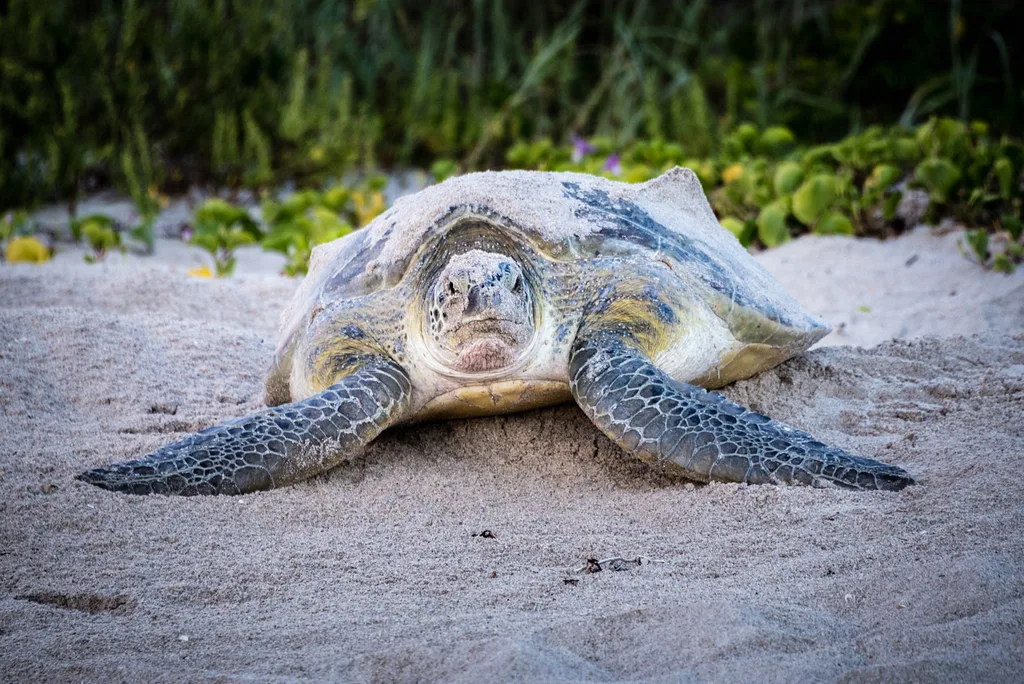
Archie Carr National Wildlife Refuge/ Flickr
6. Stella Maris Environmental Research
Stella Maris Environmental Research in Melbourne Beach is a conservation centre that provides guided tours inside the Archie Carr National Wildlife Refuge. These walks are happening the evenings, because the best time for viewing sea turtles is at night.
For $19 dollars, you and your children (7 and older) can have the best chance of seeing both mothers and babies as you follow an experience tour guide that knows all the best places to look.
Make sure you bring your patience and good walking shoes. You have to walk a few miles to find the best places.
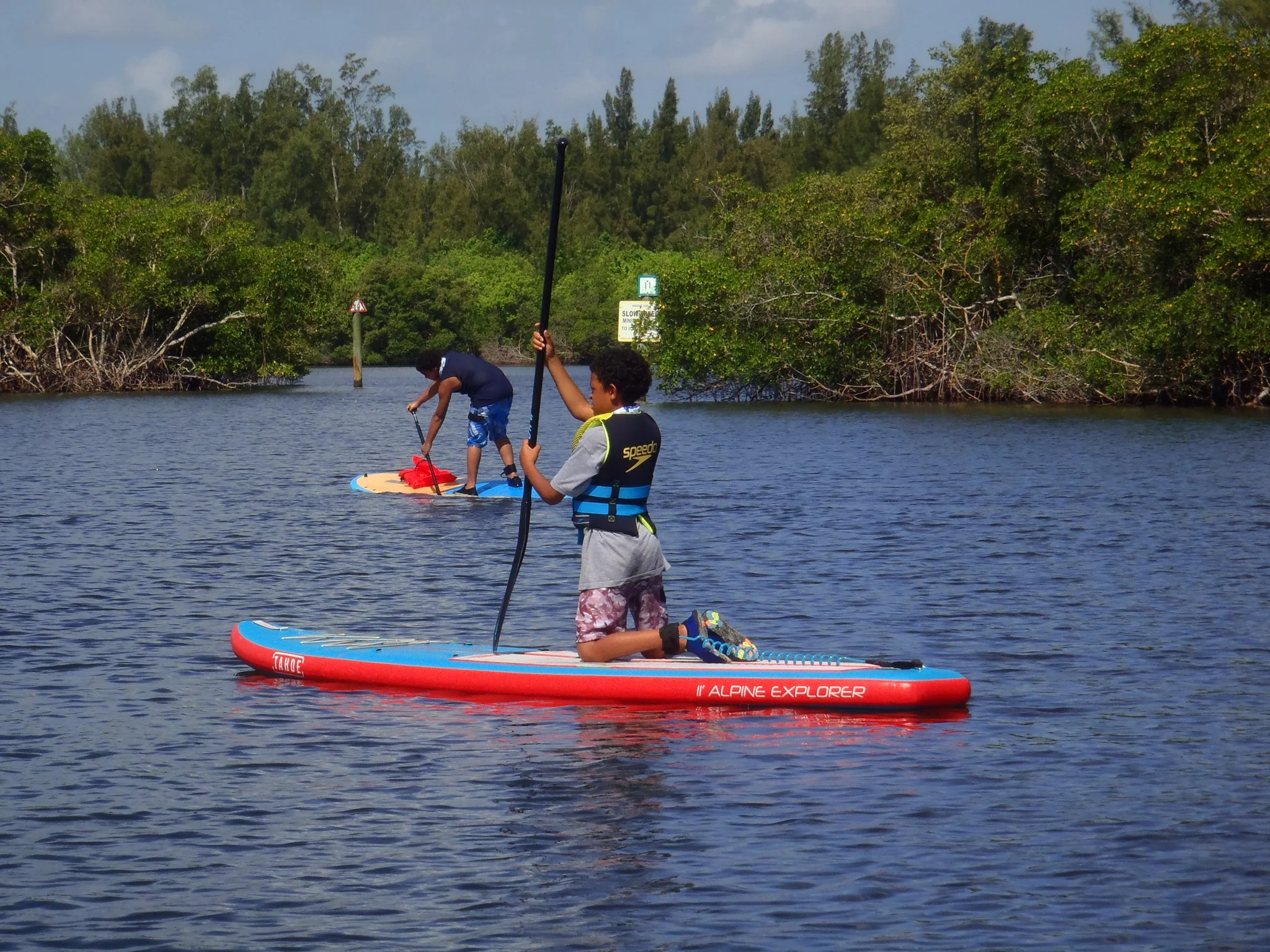
Stella Maris Environmental Research/ Facebook
7. Costal Connections
About 30 minutes to the south of Archie Carr lies Costal Connections at Kimpton Vero Beach Hotel & Spa, Vero Beach is a program that started out with eight volunteers wanting to help turtles and now they are an eco-tourism centre, hotel and spa.
They use funds raised from interactive education programs and the hotel/spa, to fund the protection and preservation of sea turtles. They provide guided tours and educational, safe interactions with turtles and other marine life in the area.
This is another great way for those who don’t like camping to interact with sea turtles and nature. It’s also a safe way to introduce your children to conservation and the importance of sea turtles. It is never too early to learn how to protect our planet.
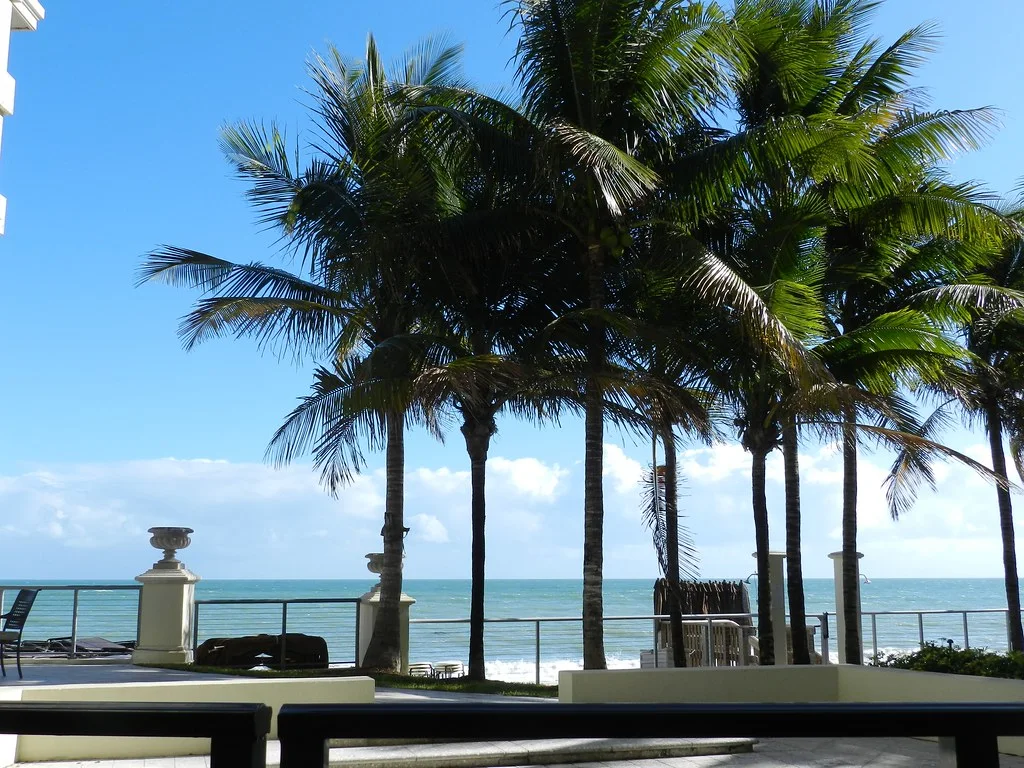
Kimpton Vero Beach/ Flickr
8. Barrier Island Sanctuary
Moving back north of Archie Carr we find the Barrier Island Sanctuary. This place is an educational center where visitors can explore the incredible diversity of this barrier island. It is a unique location, with the Atlantic to one side and a lagoon to the other.
In some places in the Sanctuary, you can stand and see fresh water and saltwater just by turning your head. It has a diverse ecosystem that allows you to see turtles in their natural habitat.
They have guided tours during nesting season. This area holds the nesting grounds for most of the Loggerhead turtles in the Western Hemisphere.
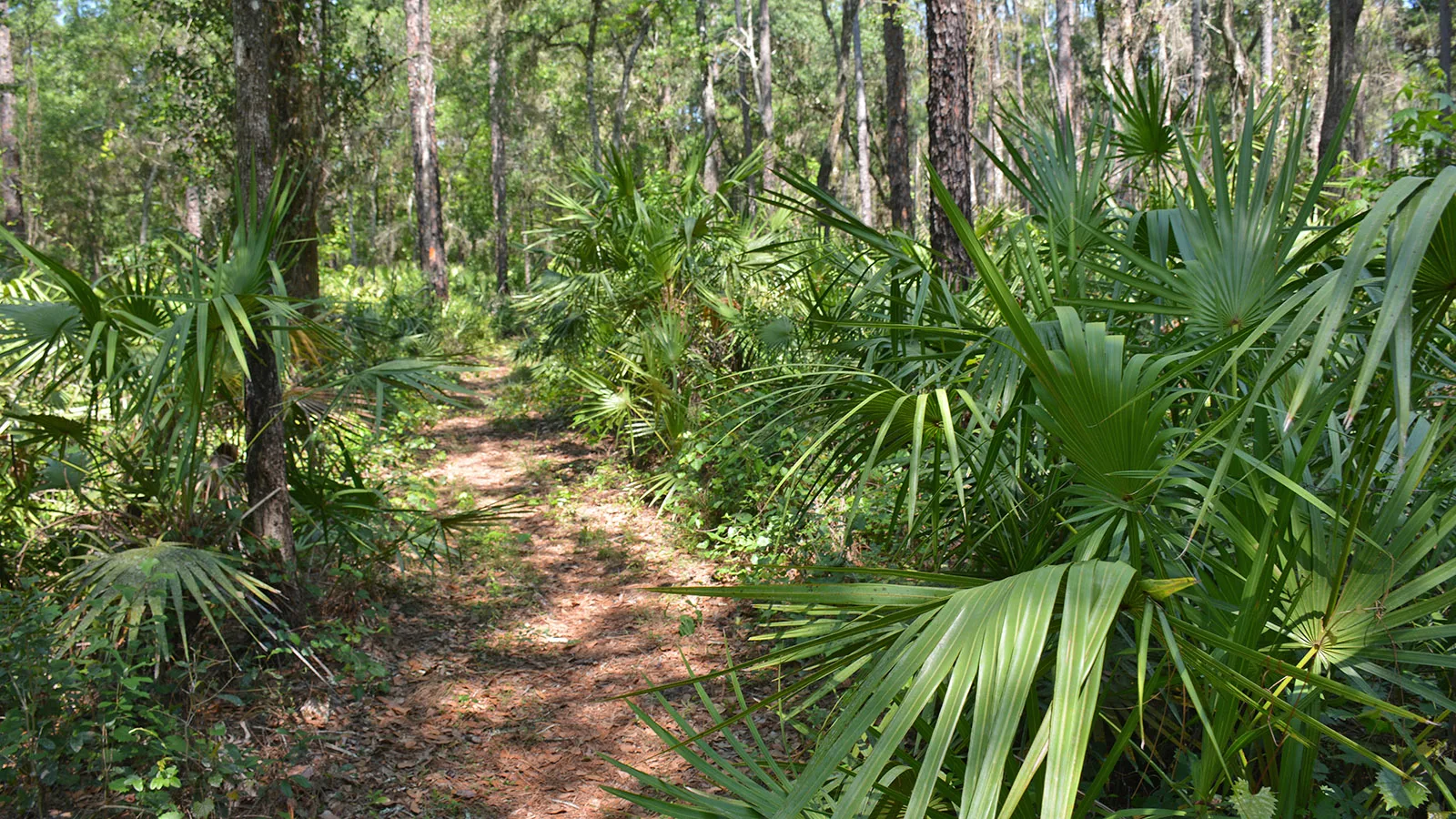
Barrier Island Sanctuary/ Facebook
9. The Sea Turtle Preservation Society
The Sea Turtle Preservation Society works out of Brevard County, just west of Orlando. It brags of 72 miles of beautiful beaches. These beaches are the largest nesting area of the loggerhead sea turtles in the world. There are also significant nesting grounds for Green turtles and Leatherback turtles.
Volunteers from this group walk the beaches, leading tours and marking nests to be protected. Their goal is to help the public interact and live safely beside the sea turtles and other local wildlife.
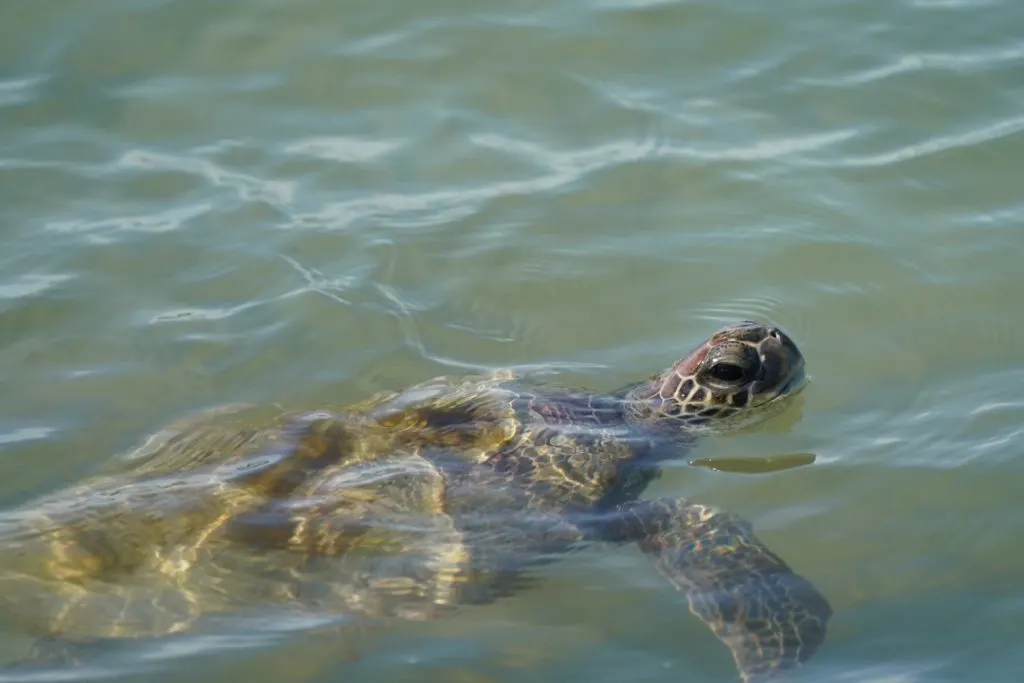
The Sea Turtle Preservation Society/ Facebook
10. Von D. Mizell-Eula Johnson State Park
Von D. Mizell-Eula Johnson State Park is in Dania Beach Florida, just west of Ft. Lauderdale. It has places for out-door activities, wildlife viewing, boat launches and an education center. It is a great place to see another endangered species as well, the manatee.
It contains a has a reef, the Dania Beach Erojacks, which is popular with scuba divers looking to see turtles and other marine life up close. To better protect the turtles and other wildlife, the park closes at sundown, so no night viewing of turtles here.
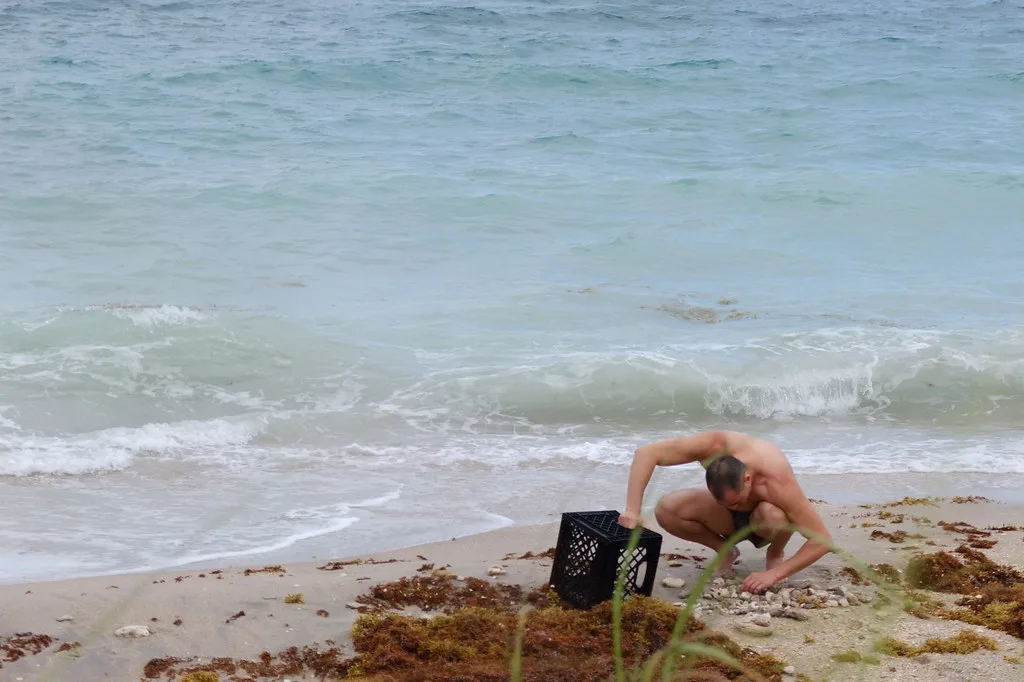
Von D. Mizell-Eula Johnson State Park/ Flickr
11. John D. MacArthur Beach State Park
John D. MacArthur Beach State Park is another barrier island state park. Located just north of Palm Beach, this small park contains 1.6 miles of pristine beaches. These are available to the public year round and they have daily nature walks, and night turtle tours available.
They also have summer cams and moonlight concerts to enjoy. While this park is one of the smallest on our list, it is the closest to the city life and might appeal to those that enjoy a little more of the luxuries of life close to their beaches.
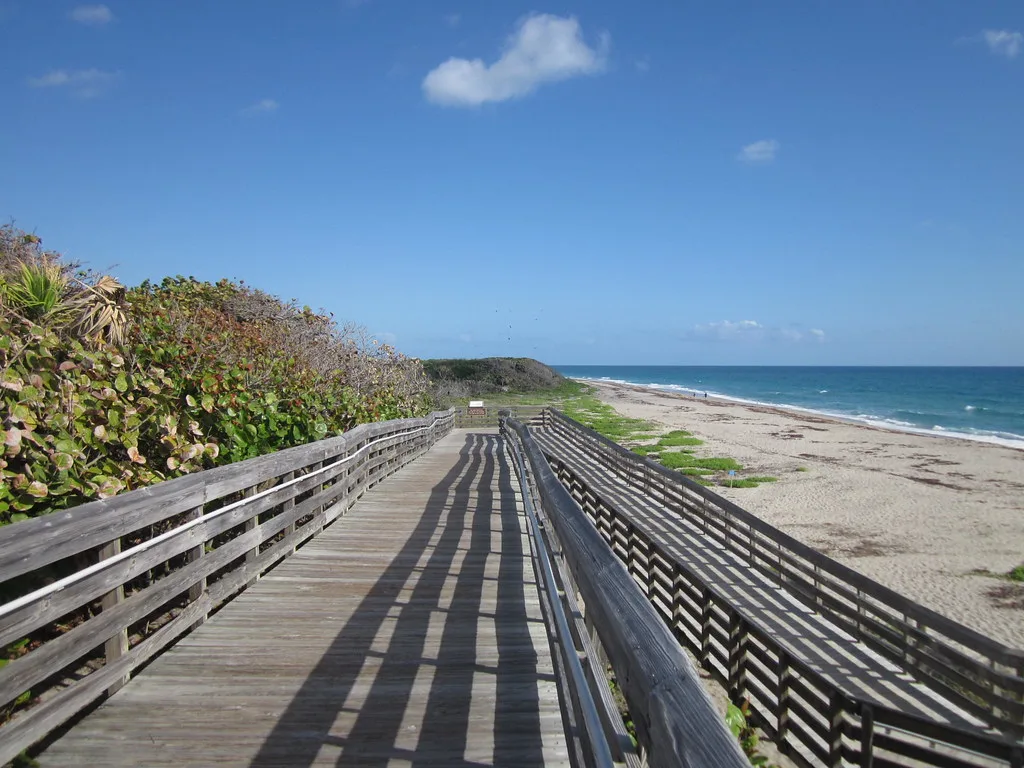
John D. MacArthur Beach State Park/ Flickr
12. Loggerhead Marine life Center
A little further north from Palm beach, in the town of Juno Beach, is the Loggerhead Marine life Center. This center is a rehabilitation facility for sea turtles.
Every year injured turtles are brought to them. They give them care and rehabilitation and, when possible, they reintroduce them to the wild. They provide tours of their facilities and of the surrounding areas. They were able to care for 83 sea turtles last year and over 700 hatchlings.
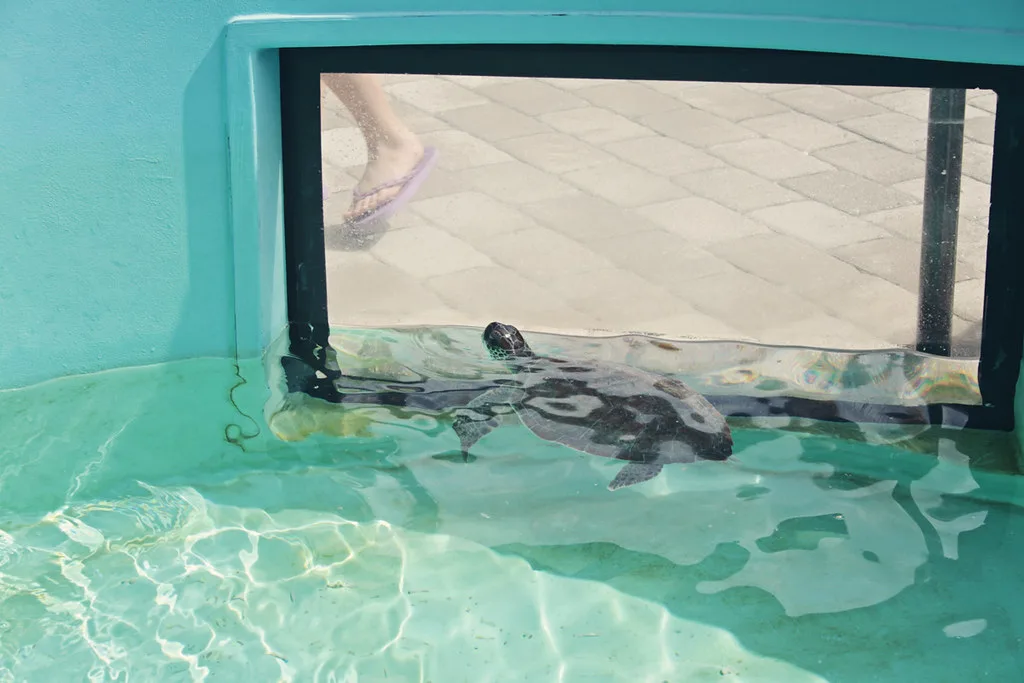
Loggerhead Marine life Center/ Flickr
13. Museum of Discovery and Science
In the town of Ft. Lauderdale, we find something special for kids and adults. Museum of Discovery and Science is a hands-on discovery center and museum of art, science and history.
The Junior League of Fort Lauderdale started it and today it serves not only the public but over 400,000 school children visit each year. They learn about science, conservation, history and art. They also have summer camps, overnight camp ins, environment programs and turtle walks as well.
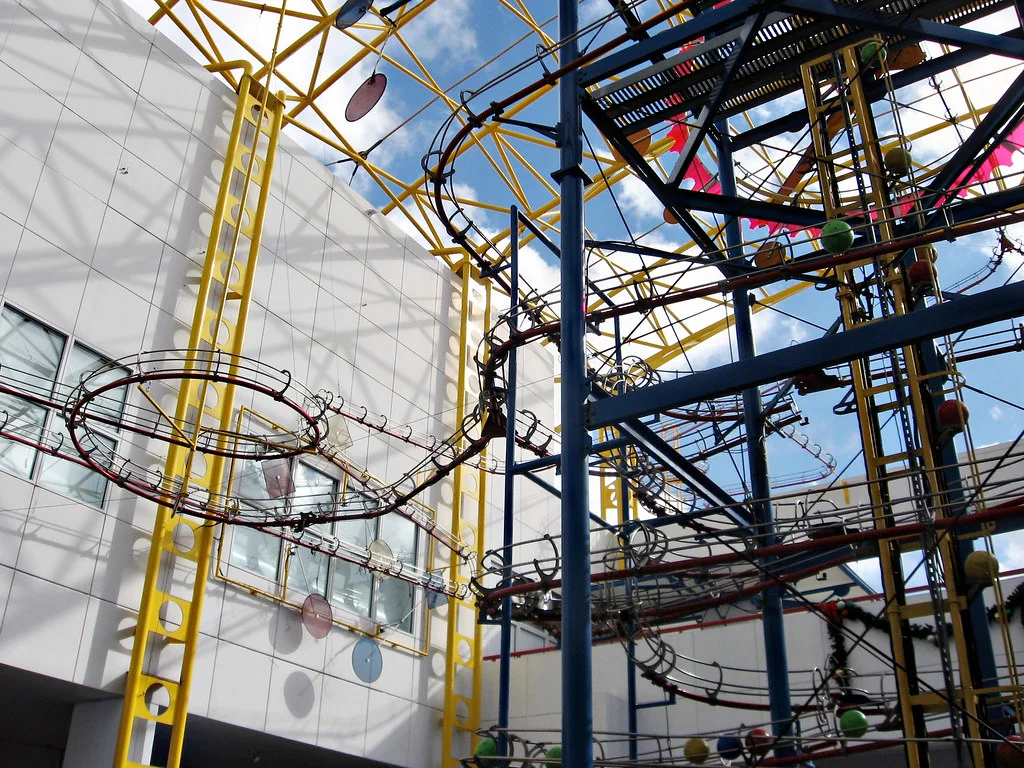
Museum of Discovery and Science/ Flickr
Species of Turtles in Florida
There are five species of sea turtles found in Florida: Kemp’s Ridley, Hawksbill, Loggerhead, Leatherback and Green Turtles.
Kemp’s Ridley
Kemp’s Ridley turtles are unique to the Gulf of Mexico, so you will only see them on the beaches facing the gulf side of Florida. These are the smallest of the sea turtles weighing in at around 75-100 pounds. They only grow to about 2 feet.
These turtles are the most endangered sea turtle species in the world. It is also the smallest turtle living in U.S. waters and the world. Most Kemp’s Ridley turtles nest in Tamaulipas, Mexico arriving all in what is known as an arribada, which is Spanish for arrival. This makes preservation vital, because if that one nesting area were damaged, it could decimate the population.
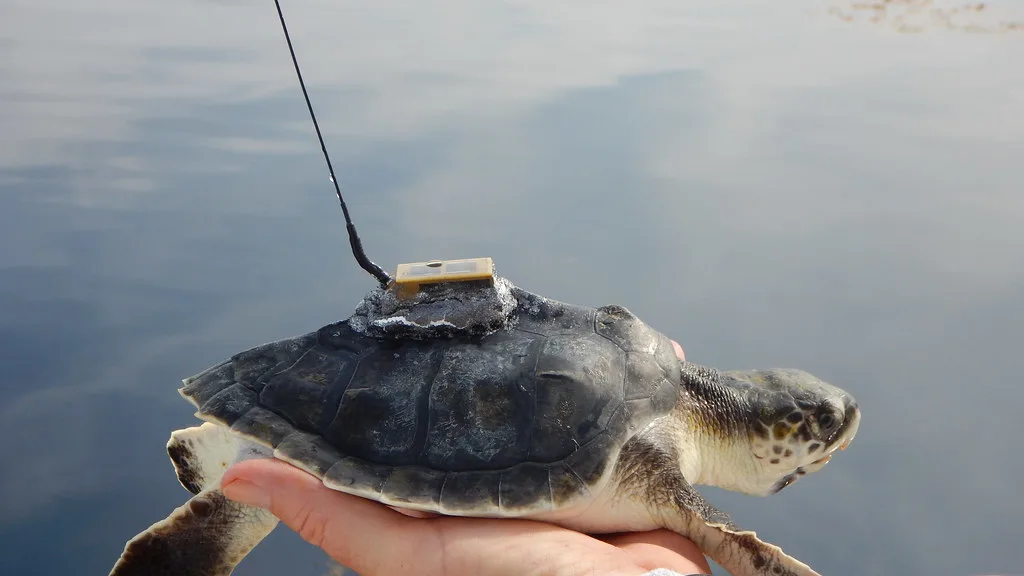
Kemp’s Ridley/ Flickr
Hawksbill
Hawksbill turtles are on the endangered species list, so seeing them is a rare privilege. Weighing in at 100-200 pounds, and they can grow up to 3 feet long. This species is more tied to the health of coral reefs than other species, making it more vulnerable due to the fragility of their habitat.
These turtles also have a beautifully coloured shell that was used to make jewellery and trinkets, contributing to its endangered status. Today it is illegal to kill these beautiful and rare creatures and if you see anything made from these shells, please don’t buy it!
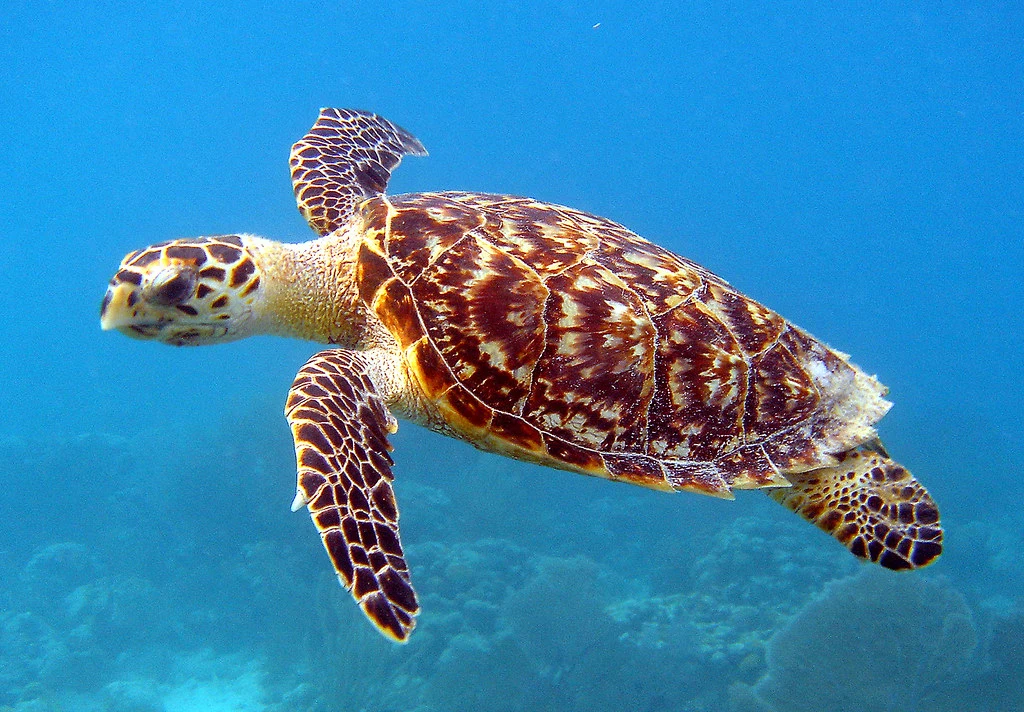
Hawksbill/ Flickr
Loggerhead
Loggerhead turtles only nest in two areas in the world, one of them being Florida’s southern coast on the Atlantic side. These rare turtles are also on the endangered species list. Loss of nesting areas, fishing nets and marine debris have all contributed to its decline.
They weigh in at 250 pounds and reach almost 3 feet. They have a great chance of getting off the protected list with careful conservation because these turtles lay over 100 eggs in 2 to 3 different nests per season.
However, these large sea creatures take 39 years to reach maturity, which means the loss of one or two years eggs could decimate the population quickly.
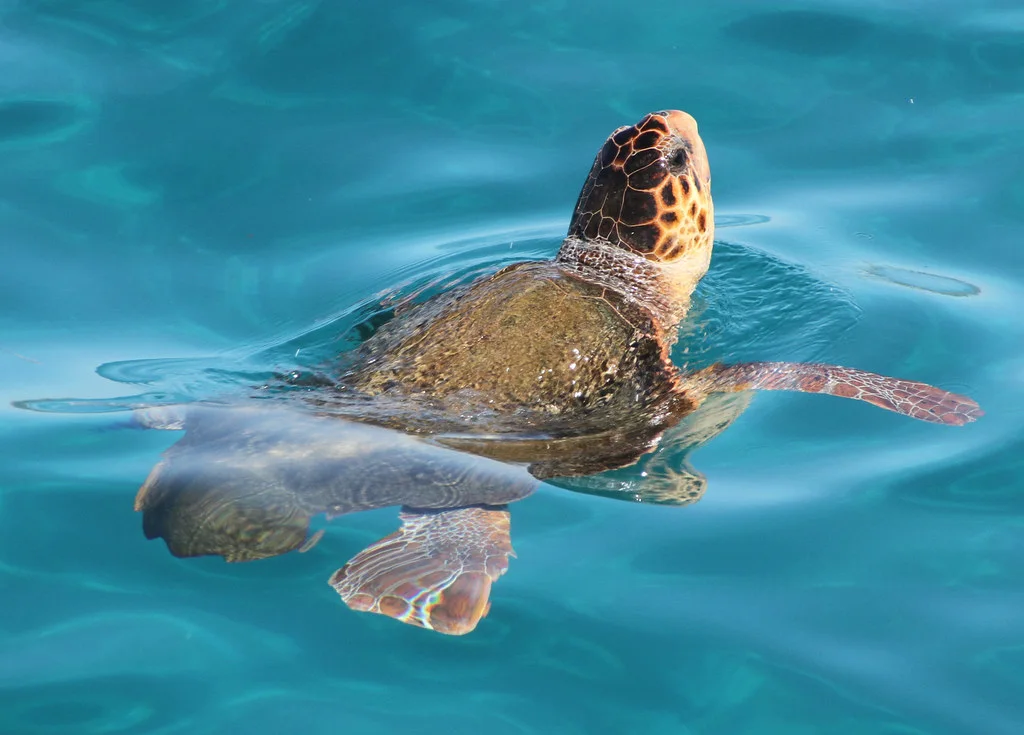
Loggerhead/ Flickr
Green
Green sea turtles are found worldwide off the coasts of over 140 different countries. It is the largest of all the hard-shelled sea turtles and the second largest of all sea turtles, bested only by the Leatherback Sea turtle. It can weigh up to 400 pounds and grow to over 3 feet.
Despite its large territory, these turtles are on the endangered list as well due to hunting, lost nesting habitat, marine debris, and fishing nets. In some countries, there is also a problem with over harvesting of their eggs.
These turtles don’t lay eggs till they are 20–30 years old and they can live to be 80 years old. They are truly amazing.
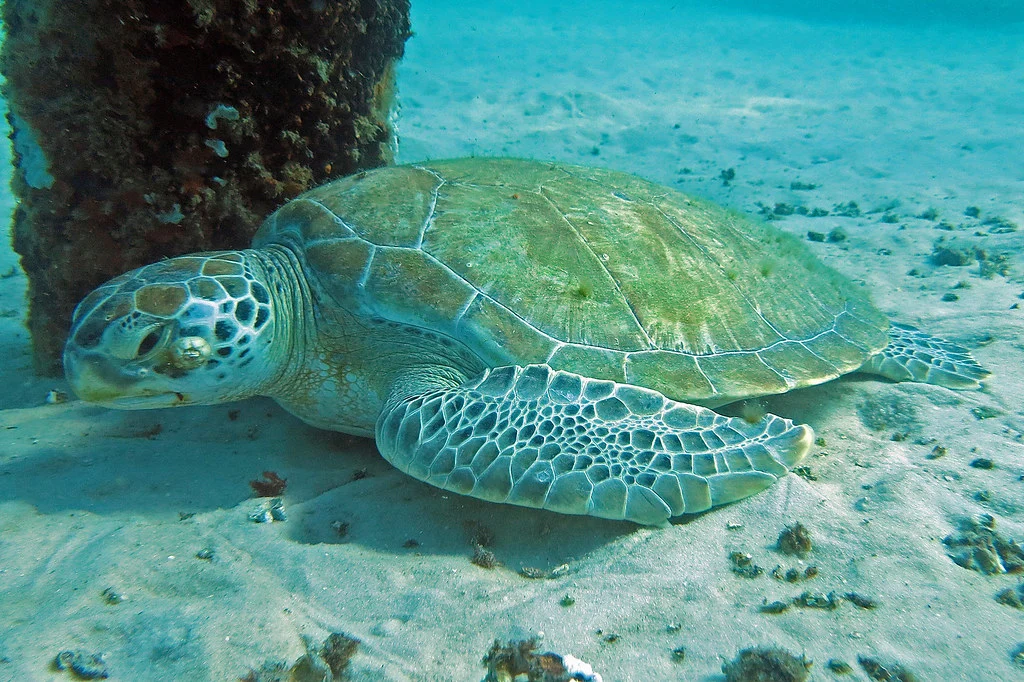
Green Sea Turtles/ Flickr
Leatherback
Leatherback sea turtles are the largest sea turtles on earth. They can weigh up to 2000 pounds and grow up to 8 feet. Instead of a hard shell, these turtles have a dark blue/black, leathery carapace.
It is flexible compared to the hard shells of other turtles. These behemoths can travel up to 10,000 miles each year looking for their favourite meal, jellyfish.
They can dive up to 4,000 feet deep and stay underwater for over 85 minutes. They are also an endangered species. They have a relatively brief life span compared to other turtles as well, they only live about 30 years.
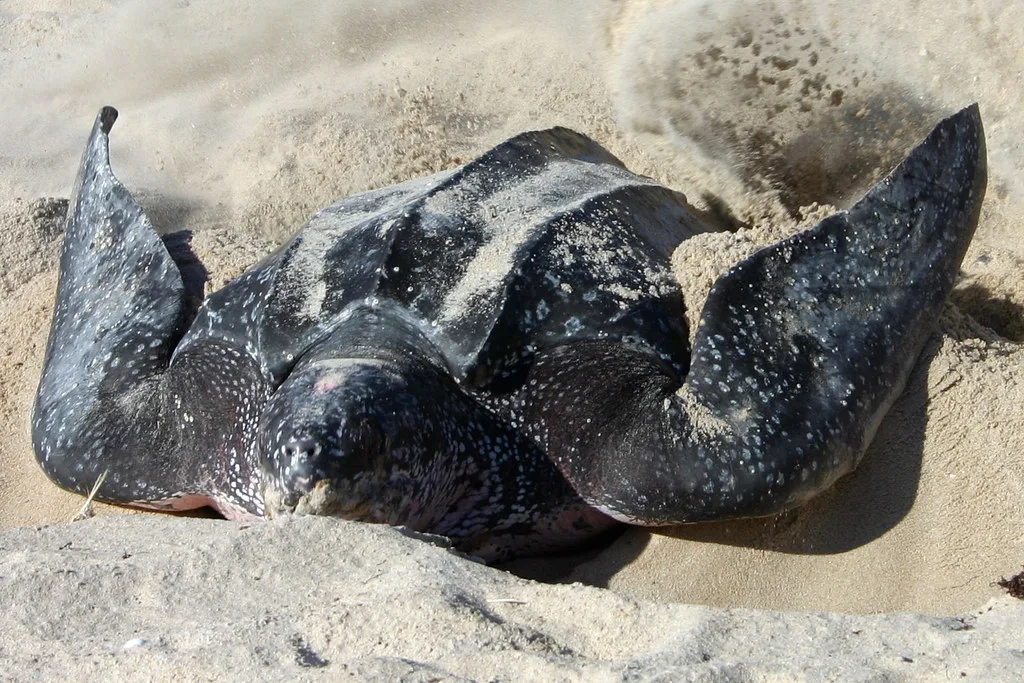
Leatherback/ Flickr
Conservation of Sea Turtles in Florida
Since these wonderful creatures are on the endangered species list, it is so important to be respectful of their nesting grounds and their homes. It is important to know that you can enjoy them without causing harm. There are multiple places where you can visit the turtles, from state parks to conservation centers to animal hospitals. You can watch them crawl up the beaches or take a guided night walk to see the little ones follow the light of the moon to the water.
No matter how you choose to visit the sea turtles, be respectful. If you dig a hole in the sand, fill it. If you make trash, throw it away. Make sure to leave everything the way you found it so the turtles can continue to enjoy our pristine beaches.
Turtles hatch about two months after the mothers put them in their nest. It can take them several days to dig through the sand to the top, and they usually emerge in the early evening. If there is too much light from the shore, they can go inland instead of making it to the water and die from a predator or dehydration. Only 25% of all hatchlings will see their first birthday, and only 1 in a 1000 will return to lay their own eggs.
With worldwide numbers declining, it is vital that everyone do their part to make sure that our children have the opportunity to visit sea turtles in the wild with their children someday.
How can you help? It is important to understand that conservation of these nesting grounds is vital. Every year fishing, hunting, predators, loss of habitat, pollution and egg harvesting decrease sea turtle numbers. Turtle doors on fishing nets have helped. Land conservation and volunteers are working daily to keep our beaches and waters clean. Every year volunteers look for nests to cover them, potentially saving the nests from predators.
Let’s Review – Sea Turtles in Florida Key Facts
That was a lot of information, so let’s review it. Five different sea turtles visit Florida each year to lay their young. They are Kemp’s Ridley, Hawksbill, Loggerhead, Leatherback and Green Turtles.
You can see sea turtles all year long in the waters off Florida’s coast, but nesting season runs from the beginning of March to the end of October.
Turtles hatch about two months after they are laid and follow the light of the moon to find their way to the water.
Four of the five turtles that make come to Florida are on the endangered species list.
Here are some tips:
- Be careful where you walk.
- Only use red lights (as these do not distract turtles), when taking a night stroll.
- Never interfere with a mother laying eggs.
- Never touch the babies!
If you are concerned, contact the local wildlife conservation team, but do not touch, you could cause more harm than good. Also, it’s illegal to harass or harm sea turtles, their eggs or their hatchlings.
Remember that no matter how much you want that great picture or to help, it is illegal to harass or harm sea turtles in any way.
Most of all, come. Take pictures, share, enjoy and share with everyone you know. Please share how important it is to preserve the nesting grounds of Florida’s incredible sea turtles.
So as we say in Florida, “Y’all come see us soon.”
***
See more:
